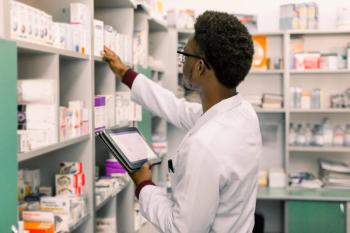
Challenges Pharmacists May Face When Implementing CGM Counseling
A conversation with Heather Folz, PharmD, BCACP and Christina H. Sherrill, PharmD, BCACP, BC-ADM.
More than 38 million Americans currently live with have diabetes in the United States and an estimated 97.6 million have pre-diabetes.1 By the year 2030, some research estimates that 54.9 million Americans will have the condition, emphasizing the critical need for both better prevention measures and disease management options.2
Since coming onto the market, continuous glucose monitors (CGM) have quickly become the standard of care for patients with diabetes. Approximately 40% to 50% of people with type 1 diabetes use a CGM and recent data has supported their use in patients with type 2 diabetes.3 Research has shown CGMs can lead to significant improvements in glycemic control, including reductions in HbA1c, average blood glucose levels, and hypoglycemic events.4
Drug Topics sat down with Heather Folz, PharmD, BCACP, associate professor of pharmacy practice at Notre Dame of Maryland University and an ambulatory care clinical pharmacist at MedStar Franklin Square Medical Center, and Christina H. Sherrill, PharmD, BCACP, BC-ADM, associate professor at UNC Eshelman School of Pharmacy, to talk about challenges pharmacists might face when integrating CGM counseling into their practice, and how pharmacists can play a role in raising public awareness about CGM technology and its benefits for diabetes management.
“[CGM] can be a huge avenue for community pharmacists,” Folz said. “They are on the frontlines filling prescriptions. They see patients that are picking up insulin, for example, and might be interested in pursuing CGM…In the past year we have had a number of CGM devices that have gone over the counter…[There is] a huge role for pharmacists, as we do a lot of with over the counter products for our patients. [This] is a huge opportunity for pharmacists to really advocate to help our patients get technology that can really help them with taking control over their health.”
READ MORE:
Are you ready to elevate your pharmacy practice? Sign up today for our
References
1. National Diabetes Statistics Report. Report. CDC. May 15, 2024. Accessed November 14, 2024. https://www.cdc.gov/diabetes/php/data-research/index.html
2. Rowley WR, Bezold C, Arikan Y, et al. Diabetes 2030: Insights from Yesterday, Today, and Future Trends. Popul Health Manag. 2017 Feb;20(1):6-12. doi: 10.1089/pop.2015.0181. Epub 2016 Apr 28. PMID: 27124621; PMCID: PMC5278808.
3. Mayberry LS, Guy C, Hendrickson CD, et al. Rates and Correlates of Uptake of Continuous Glucose Monitors Among Adults with Type 2 Diabetes in Primary Care and Endocrinology Settings. J GEN INTERN MED. 38, 2546–2552 (2023). https://doi.org/10.1007/s11606-023-08222-3
4. Manov AE, Chauhan S, Dhillon G, et al. The Effectiveness of Continuous Glucose Monitoring Devices in Managing Uncontrolled Diabetes Mellitus: A Retrospective Study. Cureus. 2023 Jul 27;15(7):e42545. doi: 10.7759/cureus.42545. PMID: 37637581; PMCID: PMC10460137.
Newsletter
Pharmacy practice is always changing. Stay ahead of the curve with the Drug Topics newsletter and get the latest drug information, industry trends, and patient care tips.





























































































































